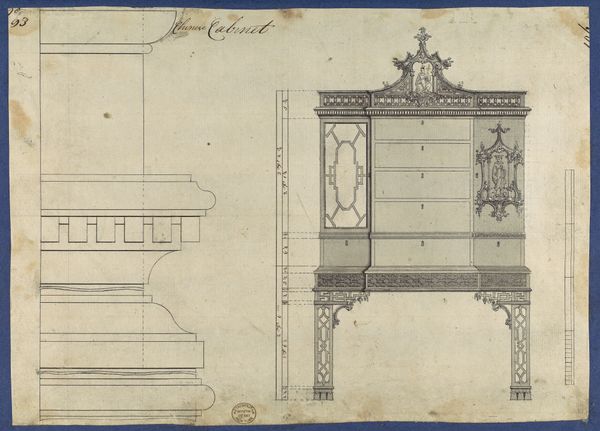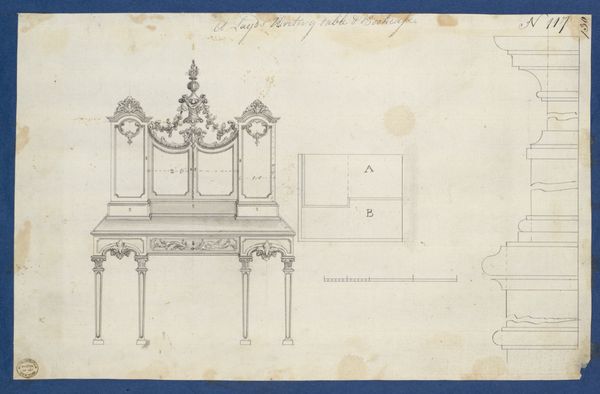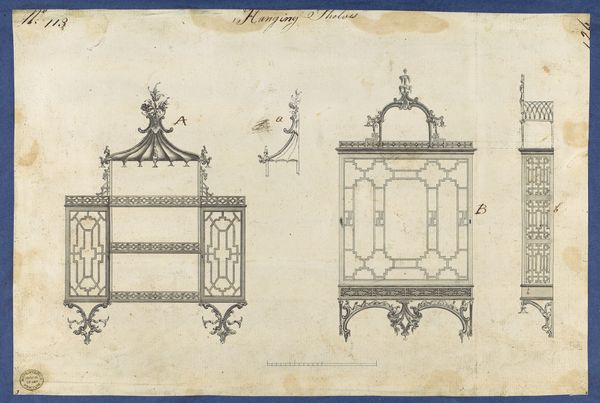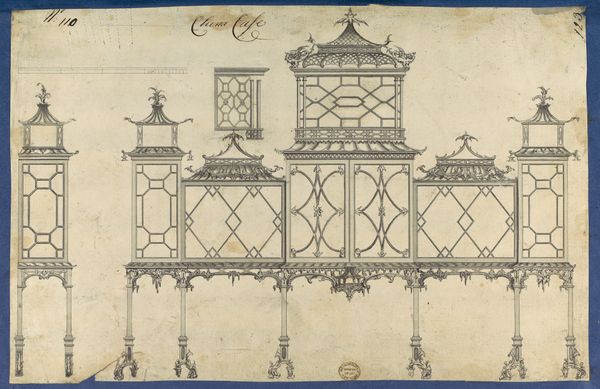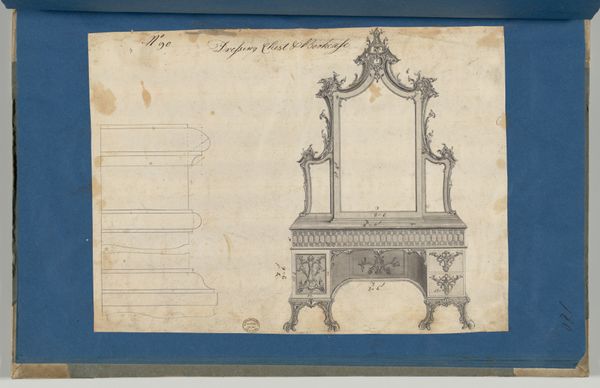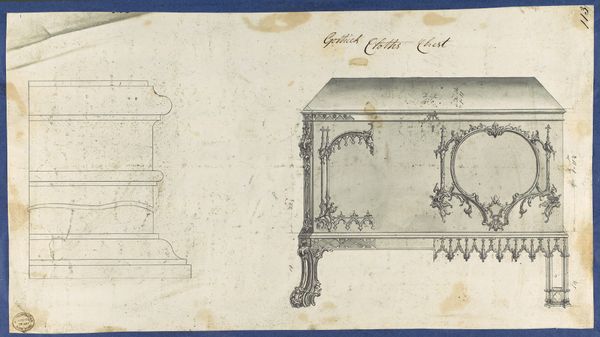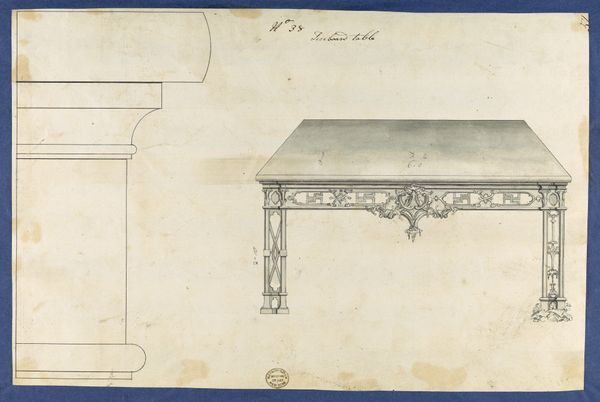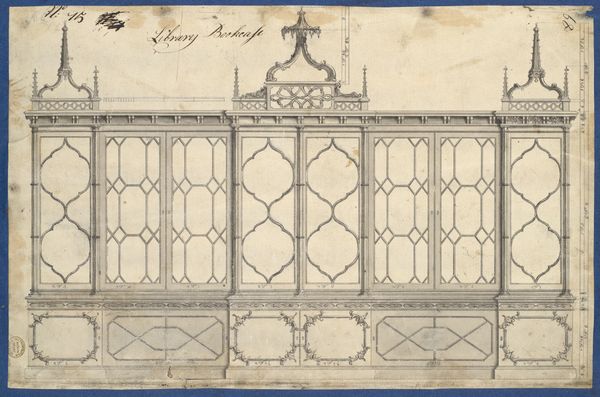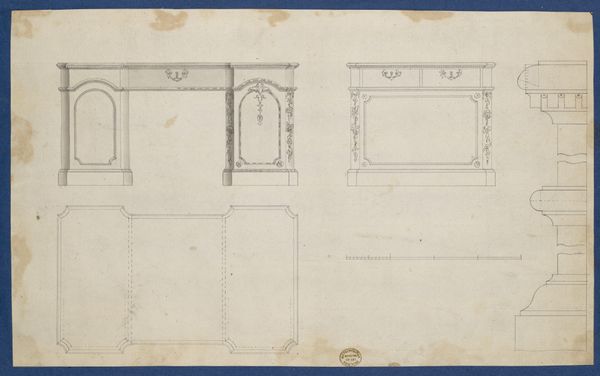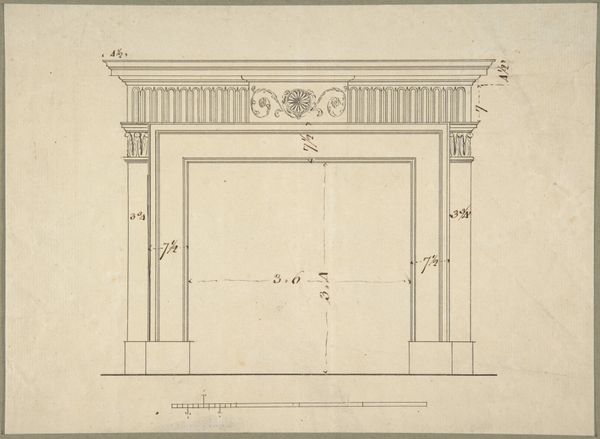
China Case, from Chippendale Drawings, Vol. II 1753
0:00
0:00
drawing, print, pencil, wood
#
drawing
# print
#
furniture
#
coloured pencil
#
geometric
#
pencil
#
wood
#
history-painting
#
rococo
Dimensions: sheet: 8 3/4 x 12 5/8 in. (22.3 x 32 cm)
Copyright: Public Domain
Thomas Chippendale’s China Case drawing presents us with a fascinating example of 18th-century Chinoiserie, capturing the European fascination with East Asian motifs. The pagoda-like structure and geometric latticework are dominant visual symbols, reflecting a romanticized vision of China. The pagoda roof, with its tiered structure, evokes ancient Chinese temples, sacred spaces believed to harmonize with the cosmos. Yet, Chippendale’s interpretation is filtered through a Western lens, transforming it into a decorative element for displaying precious objects. Consider, for example, how the pagoda form, originating as a reliquary for Buddhist relics, appears throughout Asia, adapted and reinterpreted over centuries. This echoes the obelisk of ancient Egypt, later reborn in Rome as a symbol of imperial power. In Chippendale’s design, we see this motif's journey continue, shaped by new cultural desires and aesthetic sensibilities. The cross-cultural adaptation of such symbols reveals our collective subconscious, our deep-seated desire to connect with the exotic. This constant cycle of appropriation and adaptation reveals how cultural symbols are always in flux.
Comments
No comments
Be the first to comment and join the conversation on the ultimate creative platform.

